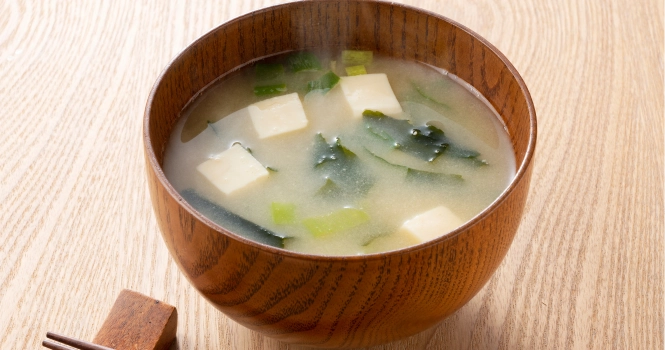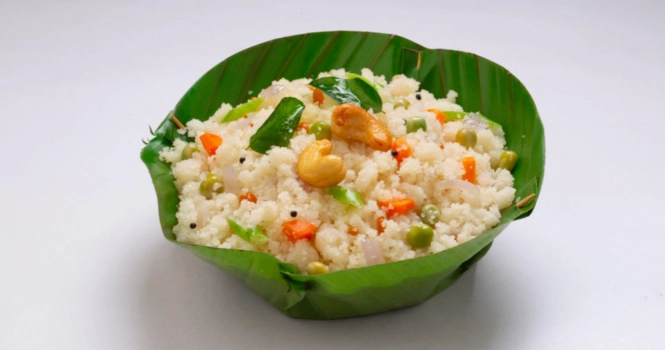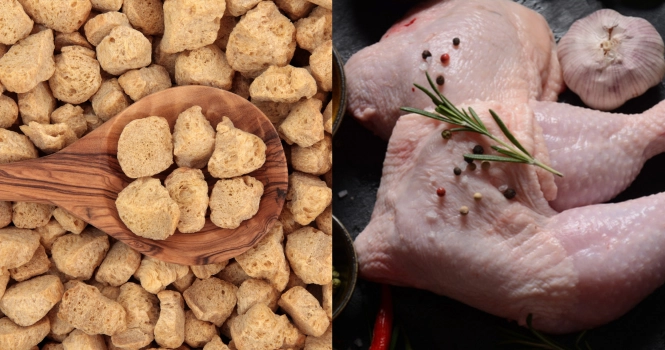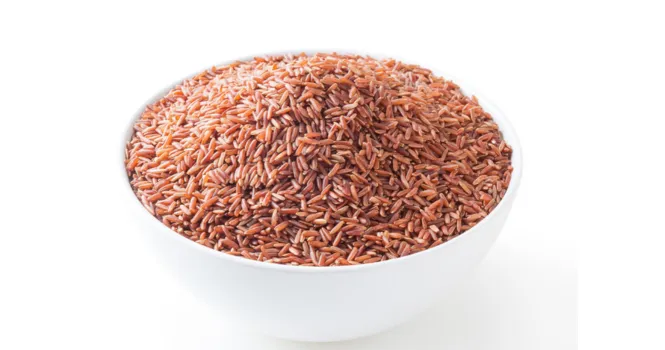Miso: Exploring the Rich Flavors and Health Benefits

Miso is a traditional Japanese seasoning produced by fermenting soybeans with salt and a specific type of fungus known as koji (Aspergillus oryzae), often with the addition of grains such as rice or barley.
This fermentation process creates a thick paste used in a wide array of Japanese dishes and increasingly in global cuisine. Miso is renowned for its rich, complex flavors that range from sweet and mild to salty and robust, depending on its fermentation duration and ingredient composition.
Historical Origins and Cultural Significance
The origins of miso can be traced back to ancient China, where a form of fermented soybean paste was developed as a way to preserve food. This technique eventually made its way to Japan in the 7th century, where it was adapted and refined into the miso known today. Over the centuries, miso became an integral part of Japanese cuisine, culture, and nutrition.
It has played a significant role in the Japanese diet, especially before the widespread use of refrigeration, as it provided essential proteins, vitamins, and minerals. It was also valued for its ability to add depth and umami—a savory taste—to dishes.
The umami comes from the breakdown of soybean proteins into amino acids during fermentation, particularly glutamate, which is a natural flavor enhancer.
Different regions in Japan developed their own varieties of miso, influenced by local climate, available ingredients, and culinary preferences. This regional diversity is still celebrated in Japan, with each area priding itself on its unique miso flavor profiles.
In addition to its culinary uses, miso holds a place in Japanese rituals and celebrations. It is often included in New Year’s dishes and other traditional meals, symbolizing good health and fortune. Miso soup, in particular, is a staple in Japanese households, commonly served as part of the traditional breakfast and with other meals throughout the day.
As Japanese cuisine gained popularity worldwide, miso began to find its way into the global culinary scene, appreciated for its unique flavors and health benefits. Today, miso is used not just in traditional Japanese cooking but also in a variety of international dishes, from soups and marinades to dressings and dips, showcasing its versatility and enduring appeal.
Types of Miso
It comes in several varieties, each with its unique flavor profile, color, and texture, influenced by the ingredients used, the proportion of those ingredients, and the length of fermentation.
The most common types are white (Shiro) miso, red (Aka) miso, and mixed or blended (Awase) miso, but there are also specialty misos that reflect regional preferences and artisanal production methods.
White Miso (Shiro Miso)
- Characteristics: White miso is made with a higher proportion of rice to soybeans, which, along with a shorter fermentation period (typically a few weeks to a few months), results in a lighter color, ranging from white to light beige. It has a mild, slightly sweet taste.
- Usage: Due to its delicate flavor, white miso is best used in light soups, salad dressings, marinades, and sauces where it can add depth without overwhelming other ingredients. It’s particularly popular in spring and summer dishes.
Red Miso (Aka Miso)
- Characteristics: Red miso is typically made with a higher proportion of soybeans and may include barley or other grains. It undergoes a longer fermentation process, often up to three years, resulting in a darker color, from red to dark brown, and a deeper, richer flavor with pronounced saltiness.
- Usage: Its robust flavor makes red miso suitable for heartier dishes like stews, braises, and thick soups. It’s also used in glazes and marinades for grilled items, where its intensity can stand up to high heat.
Mixed Miso (Awase Miso)
- Characteristics: Awase miso is a blend of white and red miso, offering a balance between the mild sweetness of white miso and the rich umami of red miso. The color and flavor can vary widely depending on the specific blend.
- Usage: This versatile type of miso can be used in a wide range of dishes, from soups and broths to marinades and dressings, making it a popular choice for everyday cooking.
Specialty Misos
- Barley Miso (Mugi Miso): Made primarily from barley and soybeans, this miso has a long fermentation period and a strong, earthy flavor. It’s common in the Kyushu region of Japan.
- Hatcho Miso: Originating from the Aichi prefecture, this type is made solely from soybeans, without any grains, resulting in a dense, rich paste with a bold flavor.
- Sweet Miso (Amamiso): With a higher sugar content and shorter fermentation time, sweet miso is mild and slightly sweet, often used in dressings and desserts.
Differences in Flavor, Fermentation Time, and Usage
The primary differences among the various types of miso lie in their flavor intensity, sweetness, and saltiness, which are influenced by the ingredients’ ratios and the length of the fermentation process.
White miso, being the mildest and sweetest, is suited to lighter dishes, whereas red miso, with its potent flavor, is reserved for heavier, more robust recipes. Mixed miso offers a balanced alternative, adaptable to a broad spectrum of culinary uses.
Understanding these differences can help in selecting the right miso for a specific dish, ensuring that its unique characteristics enhance the overall flavor profile without overpowering the other ingredients.
Nutritional Profile
It is not only cherished for its distinctive flavor but also for its nutritional benefits. Its composition includes a balanced mix of macronutrients, essential vitamins and minerals, beneficial bioactive compounds, and probiotic qualities, making it a valuable addition to a healthy diet.
Macronutrients
- Protein: It is a good source of plant-based protein, contributing to muscle repair, growth, and general bodily functions. The exact protein content can vary by type, but it generally provides a decent amount per serving.
- Carbohydrates: Carbohydrates in it , primarily come from the starches in soybeans and any grains used in its production. It contains a small amount of simple sugars, with the rest being complex carbohydrates, which are beneficial for sustained energy release.
- Fats: It contains a modest amount of fats, mostly unsaturated, which are considered heart-healthy. The fermentation process can also produce small amounts of beneficial omega-3 fatty acids.
Vitamins and Minerals
- Vitamins: It is a source of various B vitamins, including B2 (riboflavin) and B3 (niacin), which are essential for energy production and maintaining healthy skin and nervous system functions. Vitamin K, found in some types of miso, plays a crucial role in blood clotting and bone health.
- Minerals: It is rich in minerals like zinc, which supports immune function; manganese, important for bone health and metabolic processes; and copper, necessary for iron absorption and red blood cell formation. It’s also a source of calcium and iron, although the bioavailability of these minerals can be influenced by other compounds present in miso.
Bioactive Compounds
- Isoflavones: It contains isoflavones, a type of phytoestrogen that can have various health benefits, including potentially reducing the risk of heart disease and certain types of cancer.
- Antioxidants: The fermentation process increases the antioxidant content in miso, which can help combat oxidative stress and reduce inflammation in the body.
Probiotic Properties and Dietary Fiber Content
- Probiotics: As a fermented food, miso is rich in probiotics, beneficial bacteria that promote a healthy gut microbiome. These probiotics can aid in digestion, enhance nutrient absorption, and support immune function.
- Dietary Fiber: It contains dietary fiber, which is important for maintaining digestive health. Fiber aids in bowel regularity and can contribute to a feeling of fullness, which may help with weight management.
It’s important to note that it is also high in sodium, which should be considered when incorporating it into your diet, especially for individuals with high blood pressure or those on a low-sodium diet.
However, when consumed in moderation as part of a balanced diet, the nutritional benefits of miso can contribute to overall health and well-being
Health Benefits of Miso
Miso, a staple in traditional Japanese cuisine, offers a range of health benefits thanks to its rich nutritional profile, probiotic properties, and bioactive compounds. Here’s a closer look at how miso can contribute to various aspects of health:
GutHealth and the Probiotic Effects
- Probiotics: The fermentation process that miso undergoes produces beneficial bacteria that can enhance gut health. These probiotics help maintain a balanced microbiome, crucial for effective digestion and nutrient absorption.
- Digestive Health: Probiotics in miso can aid in digestive processes, reducing symptoms associated with poor digestion, such as bloating and constipation. A healthy gut microbiome is also linked to a lower risk of certain gastrointestinal disorders.
Potential Roles in Cardiovascular Health
- Blood Pressure and Cholesterol: Isoflavones in miso have been studied for their potential to improve heart health. Some research suggests that these compounds may help lower blood pressure and reduce cholesterol levels, both of which are risk factors for heart disease.
- Antioxidant Properties: Antioxidants in miso, such as vitamin E and certain phytonutrients, can help combat oxidative stress, reducing inflammation and potentially lowering the risk of atherosclerosis and other cardiovascular conditions.
Cancer Prevention
Isoflavones and Cancer Risk: Studies have explored the relationship between soy isoflavones and cancer, particularly breast and prostate cancer. Some findings suggest that moderate consumption of soy products like miso may have protective effects, possibly due to the estrogen-like activity of isoflavones.
Antioxidant Effects: The antioxidants present in miso may also contribute to its cancer-preventive properties by neutralizing harmful free radicals that can contribute to cancer development.
Immune Support
Gut Health and Immunity: The probiotics in miso not only improve gut health but also support the immune system. A healthy gut microbiome is crucial for a robust immune response, as much of the body’s immune system is located in the gut.
Nutritional Contribution: The vitamins and minerals in miso, including B vitamins, zinc, and copper, play essential roles in maintaining immune function and overall health.
Discussion on Sodium Content and Health Considerations
While miso offers numerous health benefits, it’s also high in sodium, which can be a concern for individuals with hypertension or those on a low-sodium diet. High sodium intake is associated with increased blood pressure and a higher risk of cardiovascular disease.
However, it’s worth noting that the fermentation process may alter the way sodium affects the body, and the overall health benefits of miso may counterbalance the potential negative effects of its sodium content.
Moderation is key, and incorporating miso into a balanced diet can allow individuals to enjoy its health benefits without consuming excessive sodium.
Culinary Uses
It is celebrated not only for its health benefits but also for its culinary versatility. It has a unique umami flavor that enriches a wide range of dishes, from traditional Japanese recipes to contemporary and global cuisine.
Traditional Uses in Japanese Cuisine
- Miso Soup: Perhaps the most iconic use of miso is in miso soup, a staple in Japanese meals. Miso soup typically consists of a miso-based broth with various ingredients like tofu, seaweed, and green onions. It’s revered for its comforting warmth and nourishing properties.
- Marinades: Miso marinades impart a deep, savory flavor to proteins such as fish, chicken, and tofu. The natural enzymes in miso also help tenderize meat and enhance its flavor.
- Seasoning and Sauces: It is used as a seasoning in a plethora of Japanese dishes, from vegetable stir-fries to braised meats. It’s also a key ingredient in sauces like miso tahini or miso mayo, adding complexity and depth.
Contemporary and Global Culinary Applications
Miso in Western Cuisine: It has made its way into Western kitchens, where it’s used in unconventional ways, such as in salad dressings, pasta sauces, and even in baked goods to add umami and depth.
- Fusion Dishes: The unique flavor profile of miso lends itself to fusion dishes, where it’s used to create innovative flavors, such as in miso caramel or miso-infused chocolate desserts.
- Vegetarian and Vegan Cooking: Miso is a popular ingredient in plant-based cooking, providing a rich, savory flavor that enhances vegetable dishes, soups, and meat substitutes.
Tips for Cooking with Miso and Pairing with Other Ingredients
- Heat Sensitivity: It’s beneficial probiotics can be destroyed by high heat, so it’s often added to soups and other hot dishes at the end of cooking to preserve its health benefits and flavor.
- Balancing Flavors: It is inherently salty, so it’s important to balance its flavor with other ingredients. When cooking with miso, you may need to adjust or reduce the amount of added salt.
- Complementary Pairings: It pairs well with ingredients like ginger, garlic, sesame oil, and rice vinegar. It complements the flavors of mushrooms, eggplant, and leafy greens particularly well.
- Dissolving Miso: To incorporate miso smoothly into liquid-based dishes, it’s helpful to dissolve it in a small amount of broth or water before adding it to the recipe.
- Experimentation: Don’t hesitate to experiment with miso in non-traditional dishes. Its umami quality can enhance a wide range of recipes, from soups and stews to spreads and dips.
Incorporating miso into your cooking repertoire can add not only a wealth of flavors but also nutritional benefits to your meals. Whether adhering to traditional Japanese recipes or exploring contemporary and global dishes, miso offers a unique and versatile flavor profile that can elevate your culinary creations.
Making Miso at Home
Creating miso at home is a rewarding process that allows you to customize the flavor and enjoy the benefits of this fermented paste. Here’s a comprehensive guide to making your own miso.
Required Ingredients and Equipment
Ingredients:
- Dried Soybeans: The base of miso paste.
- Koji: Fermented rice or barley inoculated with Aspergillus oryzae mold. It’s available at specialty stores or online.
- Salt: Acts as a preservative and flavor enhancer.
Equipment:
- Large Pot: For cooking the soybeans.
- Mixing Bowl: For combining the ingredients.
- Food Processor or Mortar and Pestle: For crushing the soybeans (optional, depending on desired texture).
- Measuring Cups and Spoons: For accurate ingredient portions.
- Cloth and Weight: For covering and pressing the miso.
- Airtight Container: For fermentation and storage.
Step-by-Step Guide
1. Prepare the Soybeans: Rinse the dried soybeans and soak them in water overnight or for at least 12 hours. They should double in size.
2. Cook the Soybeans: Drain the soaked beans and cook them until they are soft enough to be easily crushed. This can be done by boiling for about 2-3 hours or using a pressure cooker to reduce the cooking time.
3. Mash the Soybeans: Once cooked and slightly cooled, mash the soybeans to your desired consistency. This can be chunky or smooth, based on personal preference.
4. Mix with Koji and Salt: Allow the mashed soybeans to cool to room temperature, then mix with koji and salt. The ratio is typically around 2 parts soybeans to 1 part koji by weight, with salt making up 5-10% of the weight of the soybeans and koji combined.
5. Pack into the Container: Transfer the mixture to a clean, airtight container, pressing down firmly to eliminate air pockets. Air exposure can lead to unwanted mold growth.
6. Cover and Weight: Place a clean cloth over the surface of the miso mixture, then place a weight on top to help expel any air during fermentation.
7. Ferment: Store the container in a cool, dark place. The fermentation process can take anywhere from a few months to over a year, depending on the desired flavor and depth. A longer fermentation results in a darker, richer miso.
8. Monitor: Check the miso periodically, ensuring that no harmful mold is growing. A white mold on the surface is normal and can be scraped off.
Fermentation Process and Storage Tips
- Temperature: The ideal fermentation temperature is between 25°C to 30°C (77°F to 86°F). Temperature fluctuations can affect the fermentation process and the miso’s final taste.
- Duration: Taste the miso at different stages to find the flavor profile you prefer. Fermentation can significantly change the miso’s character over time.
- Storage: Once the miso has fermented to your liking, it can be stored in the refrigerator, where it will continue to age slowly, further developing its flavor.
Making miso at home is a simple yet lengthy process that requires patience. The end result is a deeply flavorful, homemade miso that can be used in a variety of dishes, offering both nutritional benefits and satisfaction from creating something truly unique and personal.
Miso in Vegetarian and Vegan Diets
Miso, with its rich umami flavor and nutritional profile, is an excellent addition to vegetarian and vegan diets. It not only enhances the taste of plant-based dishes but also contributes valuable nutrients, making it a staple in many vegetarian and vegan kitchens.
Role as a Flavor Enhancer and Umami Source
- Umami Depth: It is renowned for its umami, the fifth basic taste, which adds depth and complexity to dishes. This savory quality can elevate vegetarian and vegan recipes, making them more satisfying and flavorful.
- Versatility in Cooking: Miso can be used in a variety of ways in plant-based cooking, from soups and stews to dressings, marinades, and sauces. It can even be added to vegan cheese recipes to enhance their savory, cheesy flavor.
Nutritional Benefits for Plant-Based Diets
- Protein: As a fermented soy product, miso is a good source of plant-based protein, which is crucial in vegetarian and vegan diets for maintaining muscle mass and overall health.
- Vitamins and Minerals: It contributes a range of vitamins and minerals, including B vitamins, zinc, and copper, which can sometimes be more challenging to obtain from a plant-based diet.
- Probiotics: The fermentation process generates probiotics, beneficial for gut health. A healthy gut microbiome is essential for optimal digestion, nutrient absorption, and immune function.
Substituting Miso in Traditional Recipes for Vegan and Vegetarian Versions
- Enhancing Soups and Broths: It can be used to create rich, flavorful bases for vegan soups and broths, substituting traditional meat-based stocks and adding complexity to simple vegetable broths.
- Vegan Dairy Alternatives: It’s savory qualities make it an ideal addition to vegan cheese, butter, and cream recipes, where it adds a depth of flavor that mimics the richness of dairy products.
- Meat Substitutes: In vegetarian and vegan cooking, miso can be used to marinate and season plant-based meat substitutes, such as tofu, tempeh, and seitan, enhancing their flavor and making them more appealing as meat alternatives.
- Sauces and Dressings: It can be incorporated into sauces and dressings to add a savory punch to salads, grain bowls, and vegetable dishes, elevating the taste profile of vegan and vegetarian meals.
Incorporating miso into vegetarian and vegan diets not only enhances the flavor of dishes but also boosts their nutritional value. Its versatility in cooking and ability to impart a rich umami taste make it an invaluable ingredient for creating satisfying and healthful plant-based meals.
Sustainability and Ethical Considerations
Miso, as a fermented soy product, brings several sustainability and ethical considerations to the forefront. Its production, ingredient sourcing, and traditional fermentation practices play a role in sustainable food systems, making it an environmentally conscious choice for many.
Miso Production’s Environmental Footprint
- Low Impact: Compared to animal-based products, miso has a relatively low environmental footprint. The production of soybeans, the primary ingredient in miso, typically requires less water, land, and energy than that of livestock, resulting in lower greenhouse gas emissions.
- Fermentation Efficiency: The fermentation process used in making miso is energy-efficient and environmentally friendly. It leverages natural microbial activity, which does not require the high energy inputs associated with some modern food processing techniques.
Sustainable Sourcing of Ingredients
- Organic and Non-GMO Soybeans: There is a growing demand for miso made from organic and non-GMO soybeans, addressing concerns about genetically modified crops and pesticide use. Organic farming practices support soil health, biodiversity, and reduced chemical inputs, aligning with sustainable agriculture principles.
- Local Sourcing: The trend towards locally sourced ingredients has influenced miso production as well. Using locally grown soybeans and grains reduces transportation emissions and supports local economies. Artisanal miso producers often prioritize local and sustainable sourcing.
The Role of Traditional Fermentation Practices in Sustainable Food Systems
- Preservation and Value Addition: Fermentation is an ancient method of food preservation, extending the shelf life of ingredients without the need for refrigeration or chemical preservatives. Miso exemplifies how fermentation can add nutritional and culinary value to basic ingredients, enhancing their utility and reducing food waste.
- Cultural Heritage and Biodiversity: Traditional miso fermentation practices contribute to the maintenance of cultural heritage and biodiversity. Different regions produce unique miso varieties using local microbial strains and ingredients, preserving culinary diversity and encouraging the cultivation of diverse crop varieties.
- Education and Community Engagement: The art of making miso and other fermented foods often involves community participation and knowledge sharing. Workshops, local fermentation clubs, and artisanal producers play a role in educating the public about sustainable food practices and the benefits of fermentation.
In Summary,
Miso production and consumption touch upon several aspects of sustainability and ethical food choices.
From its low environmental impact to the promotion of sustainable farming practices and the preservation of traditional fermentation methods, miso represents a food choice that aligns with ecological stewardship and cultural sustainability.












